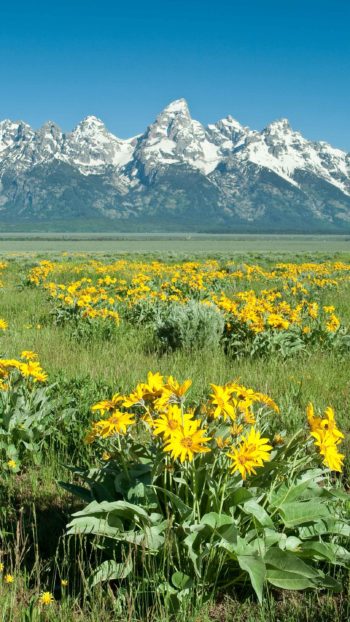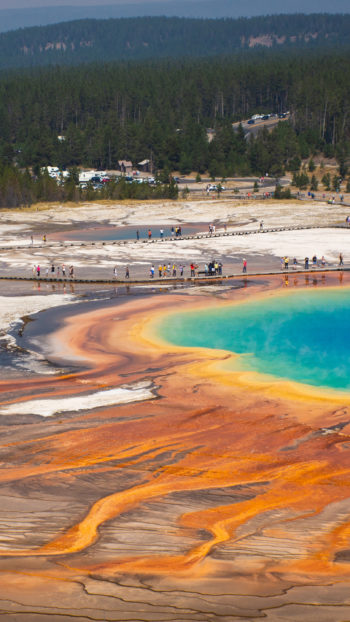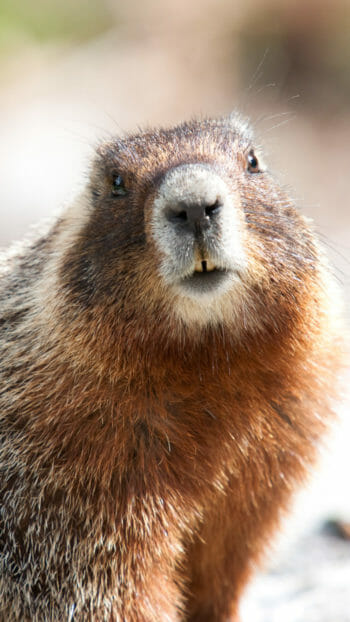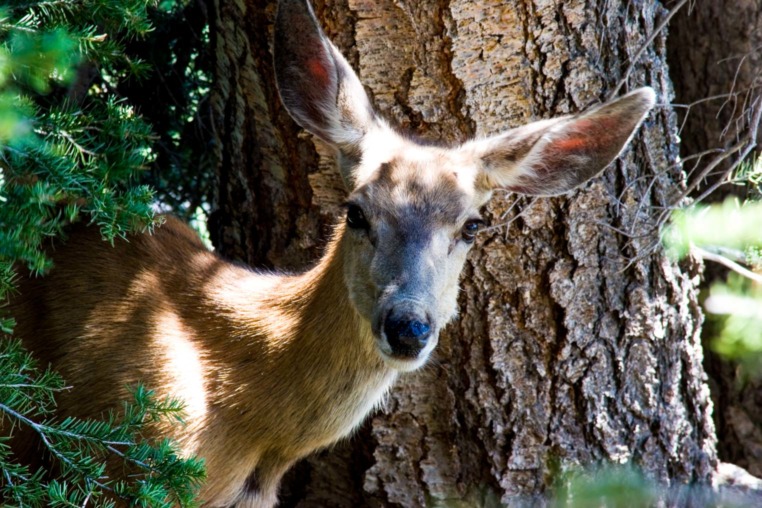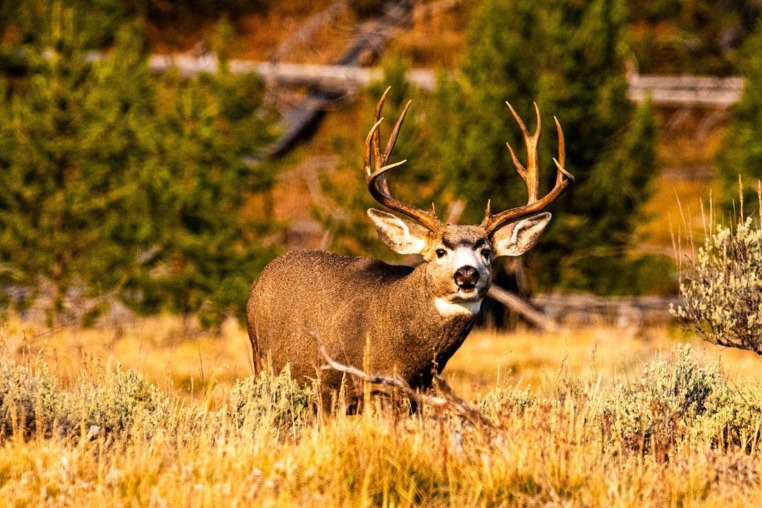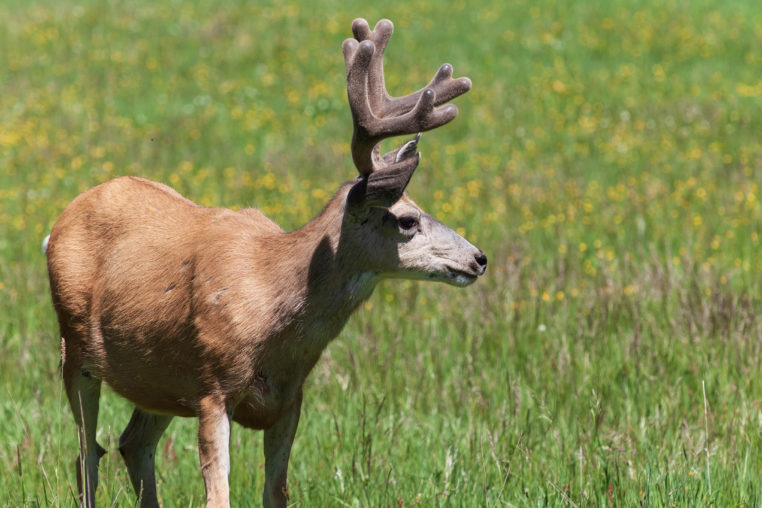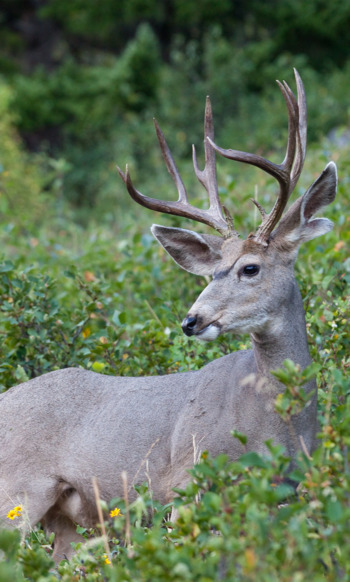
Odocoileus hemionus
Mule deer are among the most iconic mammals of the American West, named for their large, mule-like ears that catch everyone’s attention. Once widespread across much of western North America, mule deer populations declined in the early 20th century due to unregulated hunting and habitat loss. Today, healthy herds thrive throughout the Greater Yellowstone Ecosystem, where open sagebrush flats, forest edges, and mountain slopes provide ideal habitat. For visitors on a Jackson Hole Wildlife Safari, spotting these graceful deer is a quintessential part of the Wyoming experience.
Wildlife Viewing
- Yellowstone
- Grand Teton
- Jackson Hole
Book Online
Watch For Wildlife On These Tours
About
A Distinctive Member of the Deer Family
Mule deer are smaller and more delicate than elk but larger than their close cousins, the white-tailed deer. Adult females, called does, typically weigh between 100–150 pounds, while males, or bucks, can reach 200–300 pounds. They stand about 3 to 3.5 feet tall at the shoulder. One of their most distinctive traits (beyond their ears) is their black-tipped tail and bounding gait known as “stotting”, in which all four hooves hit the ground simultaneously, allowing them to navigate rugged terrain with surprising agility.
Each year, bucks grow branched antlers that fork in pairs, unlike the single main beam of a white-tailed deer. These antlers, which can span up to 30 inches, are shed and regrown annually, providing a visual cue for the changing seasons and a highlight for photographers exploring Grand Teton and Yellowstone National Parks.
Fawning Season
From late May through June, female mule deer retreat to secluded areas to give birth. Most does have a single fawn their first year and twins in subsequent years. Newborn fawns weigh just 5–8 pounds and rely on stillness and camouflage to evade predators such as coyotes and foxes. For the first few weeks, mothers return periodically to nurse and groom them before rejoining the herd. Early summer safaris through Jackson Hole often reveal tender family scenes of doe and fawn moving silently through wildflowers and sage.
Summer on the Move
By midsummer, mule deer migrate to higher elevations in search of cooler temperatures and lush vegetation. They are primarily crepuscular, feeding most actively at dawn and dusk on a diet of shrubs, forbs, and grasses. Bucks spend these months focused on antler growth, which occurs under a soft, velvety layer of skin rich in blood vessels. Visitors to Grand Teton and Yellowstone during July and August may spot these velvet-antlered bucks browsing along forest edges or alpine meadows, a beautiful sight against the backdrop of summer wildflowers.
Autumn Rut and Winter Migrations
As October and November arrive, mule deer enter their rutting season, a period marked by displays of dominance, sparring between bucks, and the pursuit of does. Bucks shed their velvet in early fall, revealing hardened, polished antlers they use in gentle sparring matches to establish hierarchy and mating rights.
Once breeding concludes and snow begins to blanket the high country, mule deer migrate to lower elevations and south-facing slopes where food remains accessible. These winter ranges, often visible from the roads around Jackson Hole, are prime areas to observe herds gathered in open sage flats, moving gracefully through the snow.
Best Times to See Mule Deer
Mule deer can be observed year-round throughout the Greater Yellowstone Ecosystem, but certain seasons offer exceptional opportunities.
- Spring and early summer bring fawns and vibrant green landscapes, ideal for wildlife photography.
- Autumn provides the drama of the rut, with bucks showcasing impressive antlers and courtship behavior.
- Winter offers the chance to see large herds in open country, often alongside elk, moose, and pronghorn.
For the best experience, plan to explore at dawn or dusk, when mule deer are most active and the light is perfect for capturing their soft, watchful expressions. Whether glimpsed at sunrise against the Tetons or moving silently through a frosted meadow, mule deer are a timeless symbol of the wild, western beauty.
FAQs
What’s the best time of year to see mule deer in Jackson Hole?
Mule deer can be seen year-round, but the best viewing seasons are spring through early summer and late fall. In May and June, visitors may spot mothers with young fawns, while October and November bring the excitement of the rutting season, when bucks display their full antlers and court does. In winter, herds often move to lower elevations around Jackson, providing reliable sightings in open sagebrush flats.
How can I tell mule deer apart from white-tailed deer?
The easiest way to identify a mule deer is by its large, mule-like ears and black-tipped tail. Their antlers also differ- mule deer antlers fork in pairs, while white-tailed deer antlers typically grow from a single main beam. Mule deer are also more likely to bound with all four hooves touching down together, a motion called stotting, rather than the graceful leaps of white-tailed deer.
Do mule deer migrate like elk do?
Yes! Many mule deer populations in the Greater Yellowstone Ecosystem are migratory, moving between high-elevation summer ranges and lower wintering grounds. Some herds travel dozens of miles each season, following generations-old routes. In winter, they often gather near Jackson and along the Snake River corridor where food is more accessible.
What do mule deer eat?
Mule deer are browsers, meaning they prefer woody plants and shrubs over grasses. Their diet includes sagebrush, willows, serviceberry, and bitterbrush, along with forbs and wildflowers in the summer. Their ability to adapt their diet to the changing seasons helps them thrive in the variable landscapes of Grand Teton and Yellowstone National Parks.
Are mule deer dangerous or aggressive?
Mule deer are generally shy and non-aggressive toward humans. However, during the rutting season (fall), bucks can become more territorial and should always be viewed from a safe distance. As with all wildlife in the parks, it’s important to give mule deer plenty of space (at least 25 yards) and never attempt to feed or approach them. Respectful viewing ensures both visitor safety and the health of the animals.
Further Reading
Jackson Hole Wildlife
Jul 12, 2024
Thanks to the range of different habitats that scatter across the sprawling valley, there is a plethora of wildlife to be found. The forests house woodland creatures like foxes, mule deer, black bears, pine martens, and elk.
A Month by Month Guide to Grand Teton National Park
Jun 21, 2024
Each and every month has something special to note, meaning that no matter what season you visit will be a special time. Use this guide to determine what time of year aligns best with what your interests and goals are.

